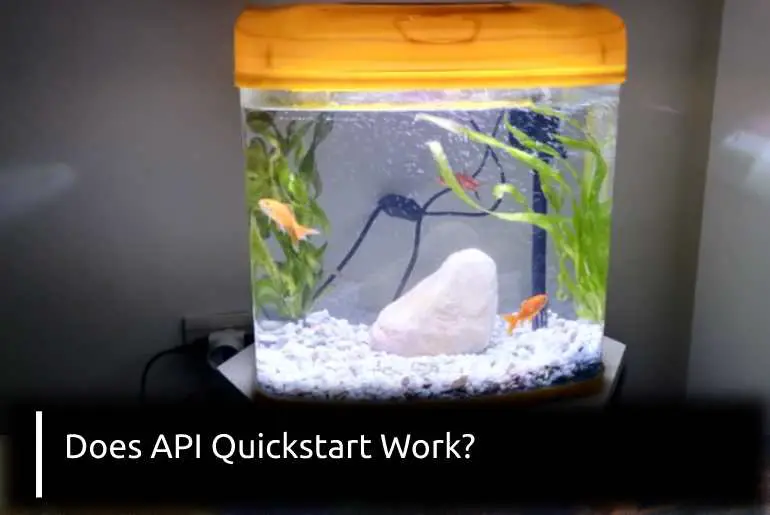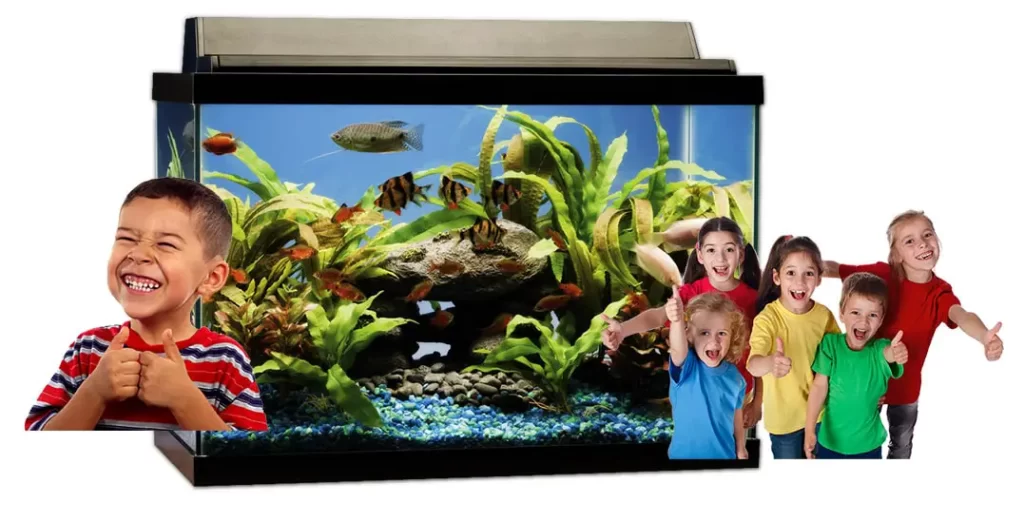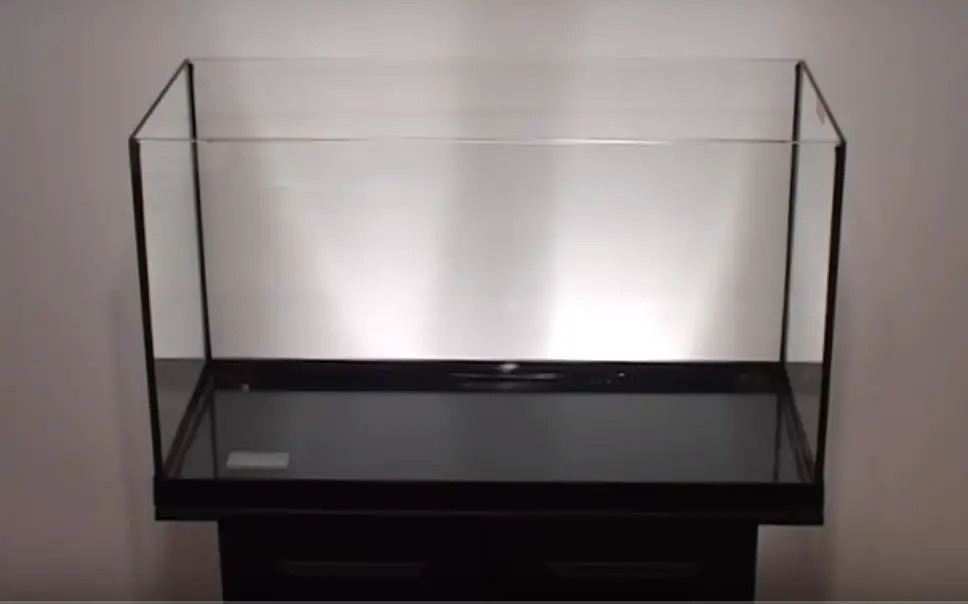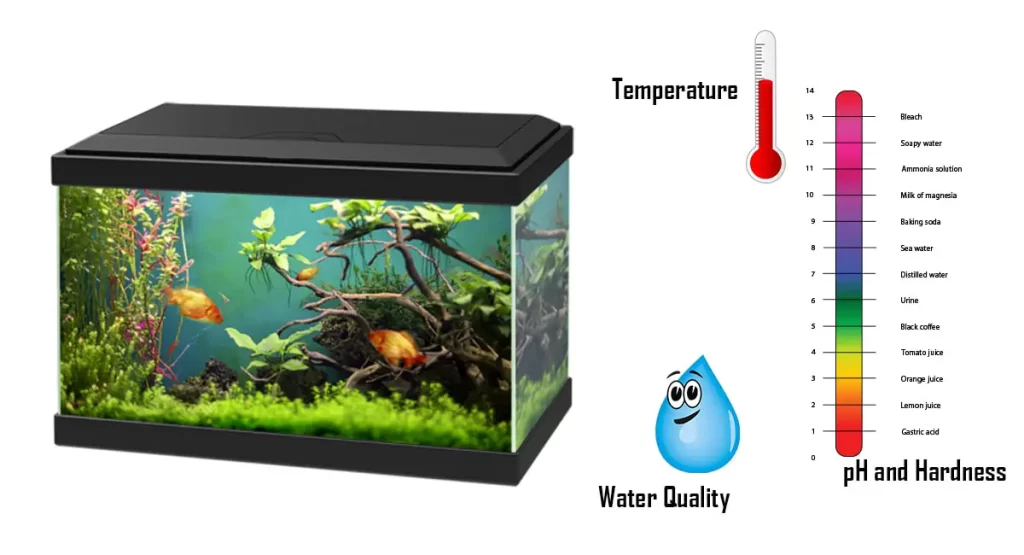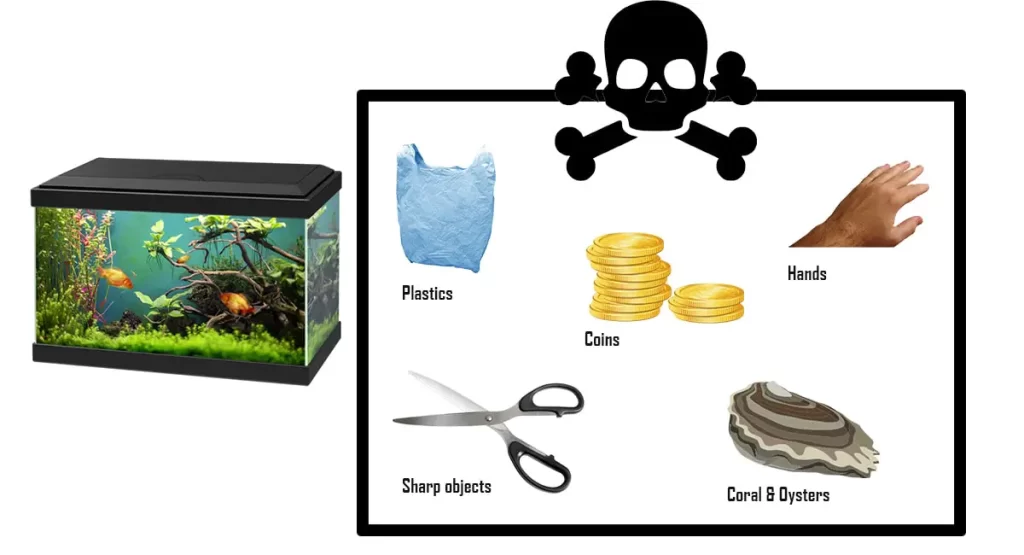Nitrifying bacteria in API Quick Start transform ammonium and nitrites into nontoxic nitrates, which are suitable for a typical aquarium. Normally, once the tank starts filtering, you ought to wait for weeks before adding your fish. You will not need to wait as long with this product.
Yes, API quickstart works. As aquarium owners, we are aware that it might be challenging to wait the required amount of time before adding fish to a fresh tank. Typically, it is recommended to wait up to 6 weeks before adding fish so that the tank’s new biological filters have time to convert waste.
In the following articles, we will be providing answers to all of your concerns regarding the use of API quickstart in your respective aquarium, along with additional information on how to use it correctly.
What Functions Does API Quick Start Have?
If your ammonium levels are too high and you want to start a new tank or add additional fish to an existing tank, API Quick Start is an excellent choice. It is also advantageous for maintaining the ammonium and nitrate levels in your tank on a regular basis.
Nitrifying bacteria in API Quick Start instantly begin your aquarium’s filtration cycle, reducing hazardous ammonia levels. The API Quick Start may often shorten the cycle time to around two weeks, whereas the normal cycle can take up to six weeks.
Pros
- Quickly begin the aquarium cycle
- permits immediate addition of fish
- when sometimes used, it reduces hazardous chemicals
- increases the lifetime of fish
- Quick and simple to use
- reduces fish stress and maintains aquarium cleanliness
Cons
- The bottle’s directions are not sufficiently detailed.
- needs initial ammonia to begin working
When Is API Quick Start Appropriate to Use?
The following three scenarios call for the use of API Quick Start:
- beginning a fresh aquarium
- following a water change or a filter change
- When introducing fresh fish to a current aquarium
You could be anxious to speed the process along in any of these situations and unable or unable to wait the customary six weeks. In certain circumstances, using API Quick Start would be an ideal way to drastically cut your waiting time. Even if you can not count on API Quick Start to operate right away, cutting your wait time in half is worth the labor it takes to use the program.
Can I Apply API Quick Start While The Tank Is Holding Fish?
You may automate operations in your tank, including feeding and watering, by implementing an API Quick Start. It can also assist you in keeping an eye on and controlling the humidity and temperature in your tank. This can be helpful if you want to monitor the environmental variables in your fish tank or if you have a difficult-to-manage fish tank.
You must first buy a fish tank controller from the aquarium shop in order to add an API Quick Start to your aquarium. After making the controller purchase, install it by adhering to the provided instructions.
Your tank’s size and water parameters must be entered into the controller after installation for it to function properly. Additionally, you must set up the Fish Tank Controller to alert you via phone or computer when specific parameters are fulfilled and set up a timetable for your fish tank.
Principal Elements Of API Quick Start
Easy to use, efficient, and reasonably priced, API Quick Start liquid will hasten the primary water filtration procedure. It functions as a water conditioner by converting nitrite and ammonia into the innocuous nitrate molecule.
We are about to become a bit more academic now. Fish waste, decaying aquarium plants, and uneaten fish food all contribute to the production of ammonia in your aquarium, which then undergoes an organic conversion to nitrite. Nitrite and ammonia may both be exceedingly hazardous to fish. Due to elevated levels of ammonium or nitrite, this might result in “New Tank Syndrome,” in which fish in a tank that is less than a year old suddenly perish. The nitrifying bacteria in API Quick Start transform ammonium and nitrite into neutral nitrates, which are suitable for a typical aquarium.
Normally, once the tank starts filtering, you have to wait for weeks before adding your fish. You will not need to wait as long with this product. Pour the API Quick Start liquid into the tank after adding the first ammonia to start the biological filtration process. Within two to three days, a tank of ordinary size should be prepared to receive fish.
Water in 230 US gallons or 870 liters may be treated by a 237 ml bottle. 20 gallons can be treated with one capful.
Efficient Use
Consider yourself a busy householder or someone whose life is really active. You may like your fish, but there are occasions when having a simple, time-saving backup plan is just as vital. With just a tiny amount added to the water, API Quick Start offers safe water and can immediately stabilize your tank.
Bottle Size
You may purchase API Quick Start in a few different sizes. You may get bottles in sizes of 4 ounces, 8 ounces, 16 ounces, and 32 ounces, depending on the volume of your aquarium.
How To Properly Use Quick Start API?
To utilize API Quick Start correctly, adhere to these precise steps:
Dechlorinate Your Water
Before Administering The Bacteria, Dechlorinate Your Water For At Least 24 Hours
Utilize an Industrial Dechlorinator. Keep the filters running throughout that period. The bacterial cycling organisms will not survive in chlorinated water. Additionally, you dechlorinate the water before adding it to the aquarium while keeping live fish in it.
Shake The Bacterium Container Thoroughly
This section is very crucial. Before adding the bacteria, give the bottle a vigorous shake.
For Every 10 Liters Of Water, Add 1 Small Fish
You should add fish to your tank as soon as possible, ideally within two hours of pouring in the bacteria. What I found to work best was this ratio of fish to water volume. By definition, this is the point at which the majority of people err, resulting in dead fish in their new aquarium.
The safest method of regulating ammonia levels is to add only one tiny fish to every 10 gallons of water. It is advisable to place an ammonia source and no live fish in a 5-gallon tank while cycling it. Fish food is one potential source.
Technically speaking, you can fill the tank with fish, but you would need extremely clean fish (fish that do not poop as much) and you would need to feed them very carefully so as not to overfeed (leaving additional ammonia work for your bacteria) or starving them (being too cautious not to overload your tank with ammonia).
Every Other Day, Give Your Fish Food
You should regularly test your water; if you see an increase in ammonia, you can skip that day’s fish food. They will be alright because many fish can go more than a week without eating.
Wait Until Day 14 Before Changing The Water
You can perform a water change to bring the levels down just when the ammonia starts to rise suddenly. If that occurs, add an additional bottle of the product. This is the reason I suggested you buy a second bottle.
This statement is supported by another important factor, though. You are probably filling your fish tank with chlorinated tap water. You would have to dechlorinate the tank water first in order to make a water change, correct? Chloramine is used in place of chlorine to disinfect water in more developed cities.
The chemical connection between chlorine and ammonia is represented by chloramine.
For instance, Seachem Prime (a frequently used dechlorinator) converts chloramine to chlorine and ammonia, manages the chlorine, and detoxifies the ammonia discharged. Every item that makes the promise to detoxify ammonia almost certainly turns it into ammoniUM.
Although ammonium is safe for both fish and bacteria, the detoxification outcome will only last between 24 and 48 hours if the pH of your tank is over 7.0. This only indicates that utilizing ammonia detoxifiers inside a non-cycled tank does not constitute a suitable long-term option. Having a pH of higher than 7.0 is not always harmful.
Anyway, the ammonium then undergoes a transformation back into ammonia, increasing the amount of the latter in the cycling tank.
For The First Two Days, Do Not Test The Water
You may test it anytime you choose. However, I insisted on sticking with that strategy throughout my testing.
For The First Day Or Two, Turn Off The Uv Lamps
There is a detrimental effect of ultraviolet light on microorganisms. I would highly advise against turning these lights on the first day following the application so that it can be established (if you have them).
Keeping The Fish Tank Cycled
You can progressively add fish after the second week, but obviously do not introduce 10 at once. The bacteria would be overpowered by this. Since a small amount of ammonium can be found in tap water, the ammonia level may increase on the initial water change, but I would not worry too much about it.
Within the coming 12 hours or so, the levels should quickly return to normal and should be generally low. Also, if you test your water and do not notice a surge in nitrites, do not panic. If your aquarium initially turns hazy, do not worry.
Over two to three days, or no more than a week, the water will become clear. When a new aquarium first starts cycling nitrogen, murky water is perfectly normal and indicates that various bacteria are building their social order.
How Frequently Should You Employ Api Quick Start?
To rebuild the ecology and avoid fish stress, the solution can be used regularly every two weeks or once a month. You can use API Quick Start in addition to beginning a new tank when:
- Water cycle or change in aquariums
- Altering the filter medium
- Whenever ammonium or nitrates are present after treating fish
How Quickly Does Api Quick Start Begin To Function?
As long as they are used correctly, API Quick Start should function. A new tank’s cycling process will accelerate dramatically, but it will not happen immediately. At the conclusion of the next week (10 to 14 days) following application, you can reasonably anticipate a fully cycled tank.
How Much Time Do You Have To Wait Before Adding Fish?
Although the bottle states that you can immediately introduce fish to your aquarium after using API Quick Start, it is preferable to wait a minimum of ten days and possibly as long as two weeks before doing so. Although the procedure starts right away, the ammonium levels will not reach the desired range until 10 to 14 days have passed.
There is no guarantee that the ammonium or nitrate levels in a new aquarium will be healthy if you introduce fish right away after using API Quick Start. The same holds true when introducing additional fish to an aquarium that already has fish.
Can An API Quick Start Overdose Occur?
Additional API Quick Start is always a good thing. Apply the liquid liberally because there is no way to overdose here on this product, and it only has positive effects on the tank. It is best to twice the dosage that is advised.
Your fish will be more beneficial if there are more beneficial bacteria in your water. The water would not be harmed or overdosed in any way, even if the full bottle of API Quick Start was poured into the aquarium. When using API Quick Start, keep in mind your dechlorinator, though, as the two must cooperate for the water cycle to be fully completed.
FAQ
Will Api Quick Start Function As Intended?
If you are using it to aid a tank cycle, make an effort to calculate how much you will need each day/week over the course of six weeks for your particular aquarium. It did work, and I would go through the entire bottle in the usual cycling time. This product works well, so you should not “save a small amount for later.”
What Is The Ideal Cycle Time For A 5-Gallon Tank?
A fish tank can need to be cycled with fish for anywhere from 6 to 8 weeks. You use fish waste as an ammonia source in the fish-in cycling approach. Once the fish have been placed in the tank and are being fed, the waste from the fish will begin to accumulate in the tank.
How Long Does Ammonia Take To Transform Into Nitrite?
Fish could become poisoned by ammonia and perish if you attempt to add them too soon. To transform poisonous fish waste, known as ammonia, into nitrite and nitrate, beneficial microorganisms are required. It takes time for these helpful bacteria to grow. The procedure could require four to six weeks to finish.
How Come My Nitrite Levels Would Not Drop?
The only approach to reduce nitrite levels is to perform water changes. Continue the modifications and keep in mind that a tank cycle is not slowed down by water changes. The nitrite-eating bacteria must be grown for them to be reduced to zero. The bacteria cannot flourish if you continually change the water and remove every last one of them.
Conclusion
If you frequently experience ammonia problems in your tank, API Quick Start is a fantastic cure-all and remedy. Finding the cause of the issue, though, might be prudent.
This review of the API Quick Start is intended to be helpful. For those who lack the time necessary to set up a new aquarium or clean an existing tank, the API aquatic cleaning water conditioner is perfect.
With its 2 step bio-filtration process, this product significantly reduces the amount of time required before fish may be added to a tank. Additionally, this lessens the strain on your water filter, extending its life and helping you save money.
Do not forget to use a dechlorinator together with your API Quick Start so that your tank water can be successfully dechlorinated while still becoming conditioned and filtered.

